When it comes to fitness and nutrition, there’s often a lot of misinformation floating around. One common misconception revolves around the production of protein powder. Many believe that protein powder is simply ground-up meat or a concoction of chemicals whipped together in a lab. However, the reality is far more fascinating. In this blog, we’ll peel back the curtain and explore the intricate process of how protein powder is actually made. Get ready to uncover the secrets behind your favorite muscle-building supplement!
1. Understanding Protein Powder Production
Before diving into the production process, let’s first grasp the basics of what protein powder is and why it’s so popular among fitness enthusiasts. Protein powder is essentially a concentrated source of protein derived from various sources such as whey, casein, soy, or peas. It’s commonly used to support muscle growth, aid in recovery after workouts, and supplement protein intake for those with active lifestyles.
2. Exploring the Production Process
Now, let’s delve into the fascinating journey of how protein powder is crafted. The production process typically begins with sourcing high-quality raw materials. For whey protein, this often involves collecting milk from dairy farms.
The milk undergoes a series of filtration and separation processes to isolate the protein component, leaving behind the lactose and fats. This purified protein solution is then dried into a powder form through methods like spray drying or freeze drying.
Plant-Based Protein Powder Production Process
For plant-based protein powders, such as those derived from soy or peas, the process begins with harvesting the crops and extracting the protein-rich components. These proteins are then concentrated and purified using techniques like solvent extraction or enzymatic hydrolysis. Once the desired protein concentration is achieved, the resulting solution is dried into a fine powder.
Implementing Stringent Quality Control Measures
Throughout the production process, stringent quality control measures are implemented to ensure the purity and safety of the final product.
This includes testing for contaminants, monitoring for proper ingredient ratios, and adhering to regulatory standards set forth by organizations like the FDA.

Safety and Quality of Protein Powders
Despite the popularity of protein powder, there’s often skepticism surrounding its safety and quality. Many people believe that protein powders are unregulated and may contain harmful additives or contaminants. However, in reality, the protein powder industry is subject to rigorous quality control measures to ensure that consumers receive safe and effective products. Let’s take a closer look at the quality control processes involved in protein powder production.
3. Quality Control Measures
Quality control begins at the very start of the production process, with careful sourcing of raw materials. Suppliers must adhere to strict quality standards to ensure the purity and integrity of the ingredients used in protein powder production.
For example, dairy farms supplying milk for whey protein must follow sanitary practices and undergo regular testing for pathogens and contaminants.

Thorough Testing of Raw Materials
Once the raw materials are received, they undergo thorough testing to verify their quality and purity. This includes analysis for protein content, moisture levels, and the presence of any contaminants such as heavy metals or microbial contaminants. Any materials that fail to meet specifications are rejected and not used in the production process.
Monitoring the Manufacturing Process
During manufacturing, we implement various checkpoints to monitor the production process and ensure consistency and quality. We closely monitor parameters such as temperature, pressure, and mixing times to maintain optimal conditions for protein extraction and drying. Additionally, we regularly take and analyze samples to confirm that the product meets specifications at each stage of production.
Final Product Testing and Compliance
Before the final product is packaged and distributed, it undergoes comprehensive testing to ensure that it meets all regulatory requirements and industry standards. This includes analysis for nutritional content, microbiological safety, and compliance with labeling regulations. We allow only products that pass these rigorous tests to be sold to consumers.
4. Sustainable Practices in Protein Powder Production
Many protein powder manufacturers also commit to sustainability while ensuring product quality. This includes implementing environmentally friendly practices throughout the production process to minimize waste and reduce their carbon footprint.
One common sustainability practice is the use of renewable energy sources such as solar or wind power to power manufacturing facilities. This helps to reduce reliance on fossil fuels and decrease greenhouse gas emissions associated with production.
Furthermore, manufacturers may implement water-saving measures such as recycling and reusing water in production processes to minimize water usage and reduce environmental impact.
In terms of packaging, many companies are switching to eco-friendly materials such as biodegradable or recyclable packaging to reduce plastic waste and promote sustainability.
By prioritizing both quality control and sustainability, protein powder manufacturers are not only providing consumers with safe and effective products but also contributing to a healthier planet.
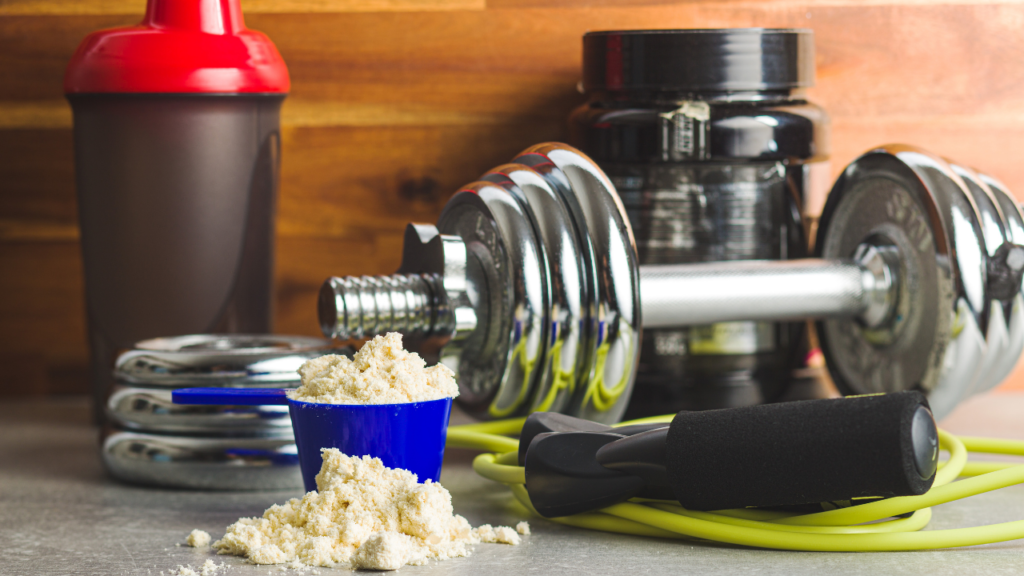
Unlocking the World of DIY Protein Powder Crafting
Despite the convenience of store-bought protein powders, many individuals harbor the misconception that crafting your own protein powder at home is a daunting task reserved only for nutrition experts. However, the truth is far simpler and more rewarding. In this segment of our blog series, we’ll explore the world of DIY protein powder crafting, from selecting ingredients to creating customized blends that suit your unique nutritional needs.
5. Sustainable Practices in DIY Protein Powder Crafting
When it comes to creating your own protein powder blends at home, sustainability can play a significant role.
By sourcing ingredients responsibly and minimizing waste, you can reduce your environmental impact while enjoying the benefits of homemade protein powder.
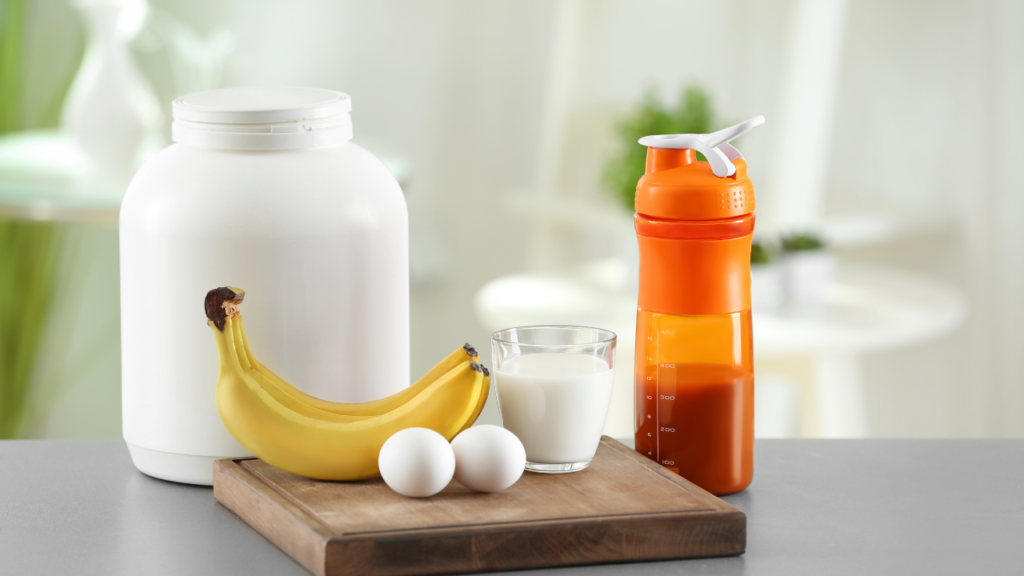
Opting for Organic and Locally Sourced Ingredients
One sustainable practice is to opt for organic and locally sourced ingredients whenever possible. Not only does this support local farmers and promote biodiversity, but it also reduces the carbon footprint associated with transportation and distribution.
Bulk Purchasing for Reduced Packaging Waste
Furthermore, consider purchasing ingredients in bulk to reduce packaging waste and save money in the long run. Many health food stores offer bulk bins where you can scoop out the exact amount of ingredients you need, without the need for excess packaging.
Minimizing Waste Through Reusable Containers
Additionally, be mindful of waste when crafting your protein powder blends. Consider using reusable containers for storing your homemade powders and repurposing leftover ingredients in other recipes to minimize food waste.
By incorporating sustainable practices into your DIY protein powder crafting routine, you can not only nourish your body but also contribute to a healthier planet.
6. Crafting Your Own Protein Powder Tips and Recipes
Now that we’ve discussed the importance of sustainability, let’s dive into the fun part: crafting your own powder blends!
Whether you’re looking to boost your post-workout recovery or simply add more protein to your diet, creating custom blends allows you to tailor your powder to your specific needs and preferences.
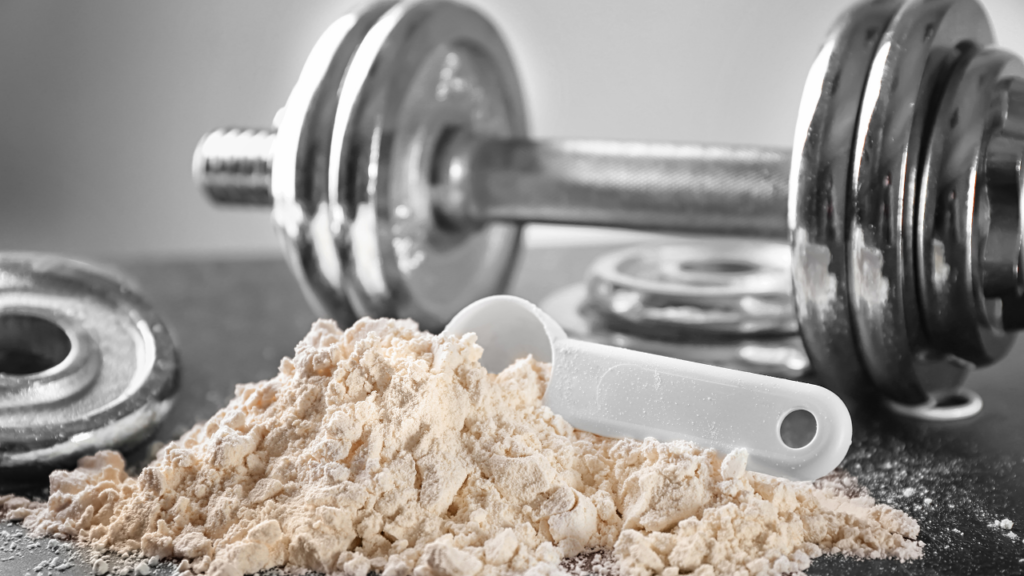
Selecting a Base Protein Source
To get started, select a base protein source such as whey, casein, soy, or pea protein. Then, experiment with adding flavorings and sweeteners such as cocoa powder, vanilla extract, or stevia to enhance the taste of your powder.
Boosting Nutrition with Superfoods
For an extra nutritional boost, consider incorporating superfood ingredients like chia seeds, flaxseeds, or spirulina into your blends. These ingredients not only add extra protein but also provide essential vitamins, minerals, and antioxidants.
Once you’ve settled on your ingredients, it’s time to blend them together to create your customized protein powder. To ensure thorough mixing and grinding of all ingredients into a fine powder, utilize a high-speed blender or food processor.
7. The Benefits of Protein Powder Supplementation
This supplementation offers numerous benefits beyond simply building muscle mass. One of the primary advantages is convenience.
It is a quick and easy way to increase your daily protein intake, especially for those with busy lifestyles or dietary restrictions.
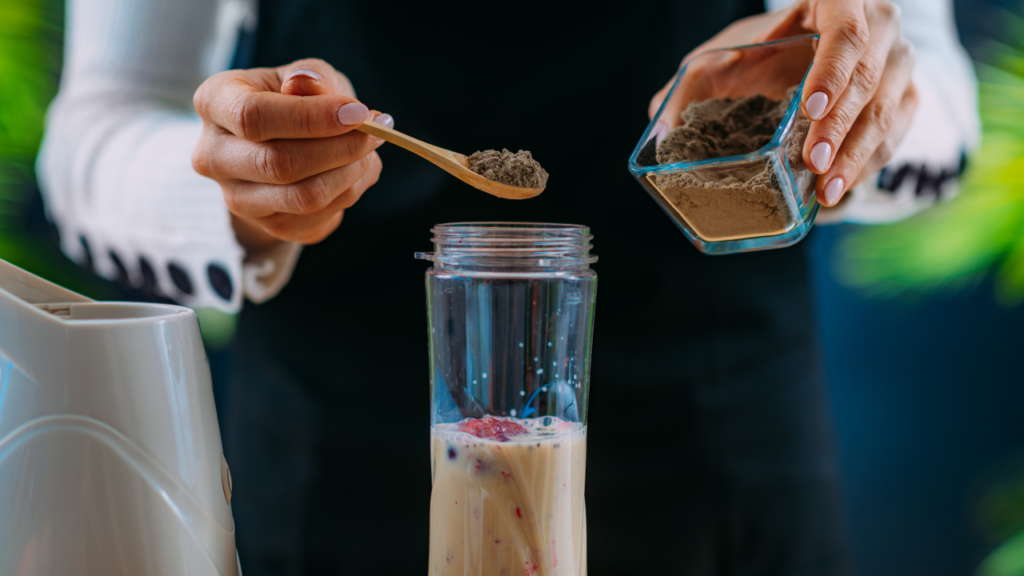
Supporting Weight Management
Additionally, protein powder can aid in weight management by promoting feelings of fullness and reducing overall calorie intake. Studies have shown that protein supplementation can help control appetite and support weight loss efforts when combined with a balanced diet and regular exercise routine.
Enhancing Muscle Recovery and Repair
Furthermore, protein powder can support muscle recovery and repair, making it an ideal post-workout supplement. Consuming protein shortly after exercise can help replenish glycogen stores, reduce muscle soreness, and promote muscle protein synthesis, leading to faster recovery and improved performance over time.
8. Maximizing Protein Powder Benefits with Proper Usage
To reap the maximum benefits of protein supplementation, it’s essential to use it correctly. Start by selecting a high-quality protein that aligns with your dietary preferences and fitness goals.
Whey protein is a popular choice for its rapid absorption and complete amino acid profile, while plant-based options like pea or soy protein are suitable for vegans or those with dairy allergies.

Timing and Dosage Considerations
Next, consider the timing and dosage of protein supplementation. Aim to consume protein within 30 minutes to an hour post-workout to optimize muscle recovery and growth. Additionally, spreading protein intake evenly throughout the day can help maintain muscle mass and support overall health.
Integration with a Balanced Diet
It’s important to combine supplements with a balanced diet full of natural foods. Although powder can increase intake, it shouldn’t substitute for real sources like lean meats, fish, eggs, dairy, beans, and nuts.
By incorporating protein powder supplementation into a well-rounded diet and exercise routine, individuals can experience the full range of benefits, from improved muscle growth and recovery to enhanced weight management and overall health.
9. Understanding Protein Powder Varieties
One of the most significant misconceptions surrounding protein is that all types are interchangeable. In reality, different protein powders offer varying benefits and are suitable for different purposes. Whey protein rapidly absorbs and boasts a complete amino acid profile, making it an excellent option for pre-workout recovery. Conversely, casein protein digests slowly, rendering it ideal for nighttime consumption or extended fasting periods.
Nutritional Benefits of Plant-Based Protein Powders
Plant-based protein powders, such as pea, soy, or hemp protein, are suitable alternatives for individuals with dairy allergies or those following a vegan diet. These options offer comparable protein content to animal-based powders and provide additional nutrients and antioxidants from plant sources.
10. Factors to Consider When Choosing Protein Powder
When selecting the right protein for your needs, there are several factors to consider.
First and foremost are your dietary preferences and any allergies or sensitivities you may have. If you’re lactose intolerant or follow a vegan diet, opting for a plant-based protein may be the best choice for you.
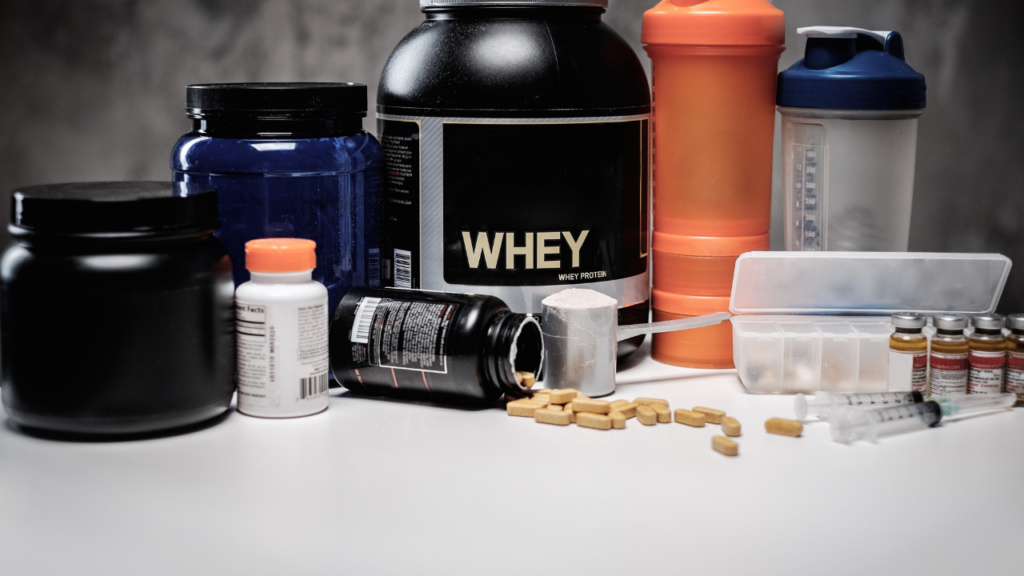
Aligning Protein Selection with Fitness Goals
Next, consider your fitness goals and the timing of your protein intake. If you’re looking to build muscle and enhance recovery, a fast-absorbing protein like whey may be most effective. Alternatively, if you’re seeking sustained energy or appetite control, a slower-digesting protein like casein or a blend of proteins may be more suitable.
Evaluating Protein Powder Ingredients
Also, make sure to check what’s in the protein powder. Choose ones with less added sugar, fake flavors, and unnecessary stuff. Pick products with lots of protein and not many extra things for the best outcome.
FAQs ( Frequently Ask Questions )
Common inquiries are answered to provide clarity and assistance.
Q: What is protein powder good for?
Answer: Protein powder is good for supplementing protein intake, aiding muscle repair and growth, supporting weight management, and providing convenient nutrition for those with busy lifestyles.
Q: Which type of protein powder is best?
Answer: The best type of protein powder depends on individual preferences, dietary restrictions, and fitness goals. Common options include whey, casein, soy, pea, and hemp protein powders.
Q: Is it good to drink protein powder every day?
Answer: Drinking protein powder daily can be beneficial as part of a balanced diet and active lifestyle. However, it’s important to consume it in moderation and vary protein sources for optimal nutrition.
Q: Which protein is best in Pakistan?
Answer: In Pakistan, whey protein is commonly available and considered one of the best options for muscle building and recovery. However, individual preferences and dietary needs should be considered when choosing a protein powder.


Pingback: how to lose chest fat 9 Powerful Tips to Shed Chest Fat Fast